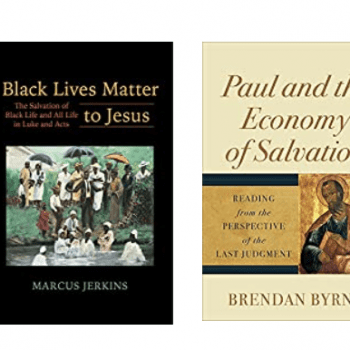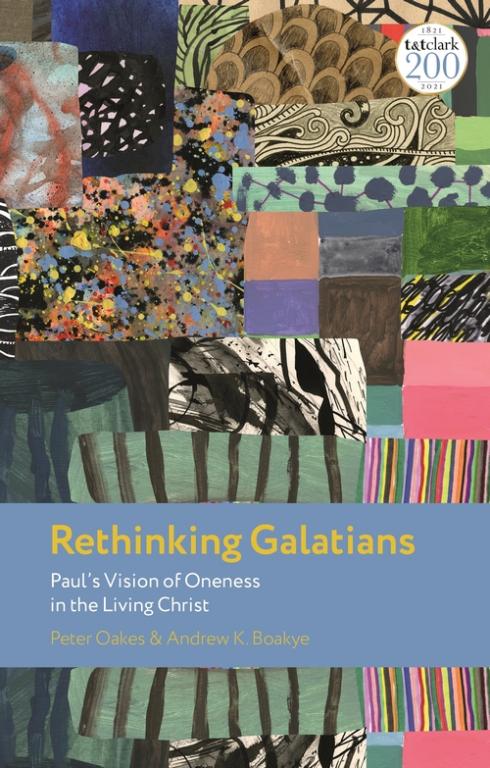 My friend Dr. Rebekah Eklund has written an incredibly rich study of how the Beatitudes have been interpreted and made an impact on Christian communities throughout the centuries. I am teaching a Gospels course right now, and had this been published a few months ago, I would have assigned it to my students. Learn more about Eklund’s book in this interview; pre-order it or put it on your reading list (release: April 27, 2021).
My friend Dr. Rebekah Eklund has written an incredibly rich study of how the Beatitudes have been interpreted and made an impact on Christian communities throughout the centuries. I am teaching a Gospels course right now, and had this been published a few months ago, I would have assigned it to my students. Learn more about Eklund’s book in this interview; pre-order it or put it on your reading list (release: April 27, 2021).
NKG: What drew your interest to the Beatitudes?
RE: The first beatitude that caught my attention was “Blessed are those who mourn, for they shall be comforted.” I was working on lament in the New Testament at the time, so I was looking at it as a lament text. I began to wonder who the mourners are (what are they mourning about?) and why they’re blessed. I did a mini-survey of how people have understood the meaning of mourning, and discovered that for centuries people assumed it was about repentance. In other words, the kind of mourning that Jesus blesses is sorrow over sin. This surprised me, because it didn’t seem to fit the context in Matthew’s Gospel (at least as I understood it, in relation to Rachel’s weeping in Matthew chapter 2), and it made me intensely curious about the origins of this view: how early did it arise? Where did it come from? Once I finished my lament book and was ready for a new project, I started reading about the Beatitudes as a whole, and realized that every beatitude has a rich history and story – and I decided I wanted to investigate and tell those stories.
NKG: Many Bible readers don’t know that there are different ways of interpreting the beatitudes. Can you give a quick sketch of the approaches?
RE: This is a little oversimplified, but there are two main approaches that people tend to take. The first one is sometimes called the “prescriptive” approach, or the approach that sees the Beatitudes as “entrance requirements for the kingdom of God.” In this view, the Beatitudes are commands to be obeyed. In other words, Jesus is calling his followers to pattern and shape their lives according to the Beatitudes, by becoming poor in spirit, merciful, pure of heart, and so on. They’re the qualities of the kingdom of God and of the people who want to dwell in that kingdom.
The second approach is sometimes called the “descriptive” approach, or an approach that sees the Beatitudes as eschatological blessings for the world to come. This view agrees with the first approach that the Beatitudes are the qualities of people who are blessed in God’s kingdom, but it completely disagrees with the idea that the Beatitudes represent ideal qualities or virtues. Instead, this approach suggests that the Beatitudes describe undesirable qualities that God promises to overturn. Those who are now poor and hungry and weeping will be rich and satisfied and full of joy in God’s kingdom. They are blessed because God sides with them against their oppressors and promises to redeem them (the last shall be first). This second approach focuses on Luke’s version of the Beatitudes (Luke 6:20-26). The first approach focuses on Matthew’s version (Matt 5:3-12).
People like Jonathan Pennington and Dale Allison helped me to see that both approaches help us make sense of the Beatitudes in different contexts. I no longer see the two approaches as mutually exclusive. Instead, I think the Beatitudes can function in both ways, depending on the context they come alive in.
NKG: Why conduct a study on a “reception history” of the Beatitudes?
RE: A reception history is a study of how a text has been “received” throughout history (thus the word “reception”). Put simply, it’s exploring how past interpreters have understood and applied a text to their own time and context. For a long time, modern biblical scholarship tended to dismiss the insights of past interpreters – too much allegory, too much eisegesis (reading into the text rather than drawing meaning from the text), not enough attention to history. Thankfully, that’s begun to change. Biblical scholars have started to discover the riches of past interpretations. Doing a reception history on the Beatitudes opened up new worlds for me. Over and over, I felt like I was being given a tour of the Beatitudes by tour guides who opened my eyes to see things I hadn’t noticed on my own. Reading in the company of past readers made this very familiar text new and sometimes even startling. It helped me to see the range of possibilities for how the Beatitudes might function – a wider range than I initially imagined, but not an infinite one.
NKG: Can you give a few examples of striking moments in the reception of the Beatitudes?
RE: I’ve already mentioned my surprise that many past interpreters viewed the “mourning” of the second beatitude as the sorrow of repentance. I was able to trace the contours of that long thread in the history of interpretation, and to make a case for why that thread focused in too narrowly on one interpretation of the beatitude at the expense of other interpretations.
But the two biggest surprises for me lay elsewhere. The first surprise was when I discovered the dominant interpretation of meekness. For most of history, until about the seventeenth century, meekness did not mean timidity; it meant the powerful ability to restrain and rightly exercise anger.
Another surprise was something well-known to many scholars of early church theologians, which is that the order of the Beatitudes was really important. These early Christians believed that Jesus spoke the Beatitudes in a certain order for a reason, and they built whole worlds of meaning from that order. I found that fascinating, especially because they weren’t always reading the Beatitudes in the same order (in some manuscripts, Matt 5:4 and Matt 5:5 are in reverse order).
NKG: What’s next for you in terms of writing projects?
I’m currently doing all things Luke! I’m working on a commentary on the Gospel of Luke (in the Baker Exegetical Commentary series) and the volume on Luke in Zondervan’s New Word Biblical Themes series. I’m looking forward to hanging out in Luke’s company for the next few years.
Eklund’s book is a beautifully-produced hardcover of 350 pages. Dale Allison wrote a foreword for the book. Check it out!













